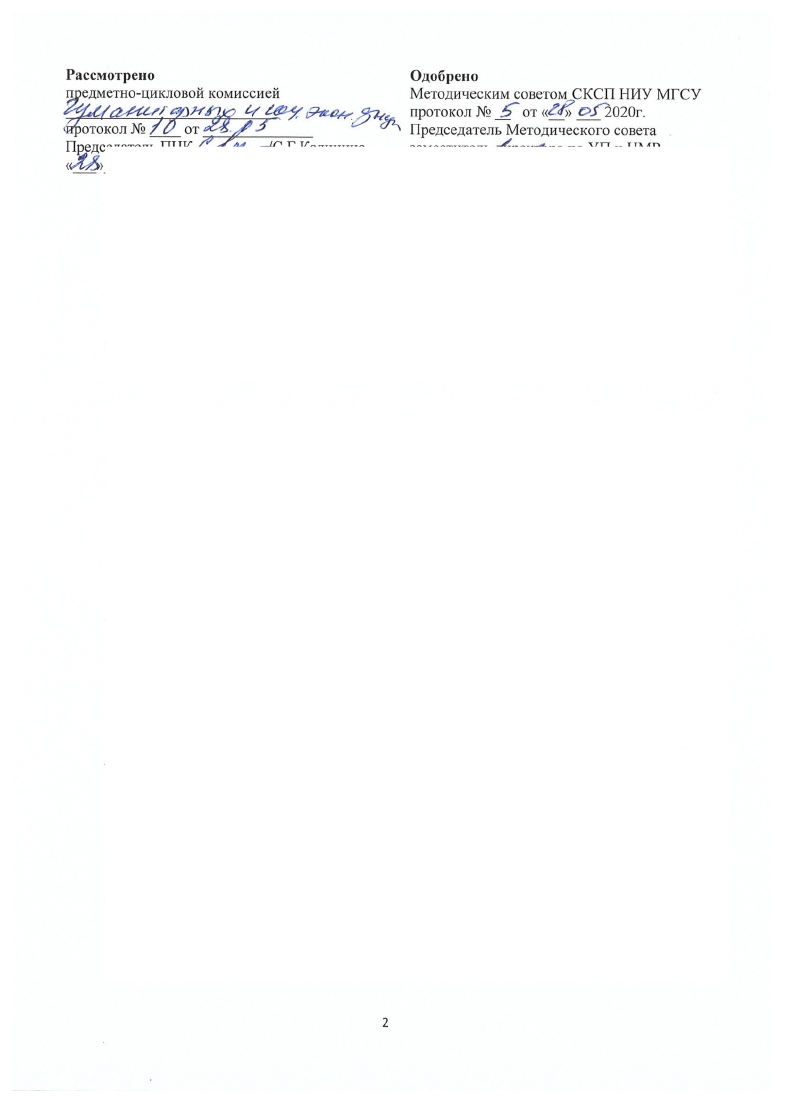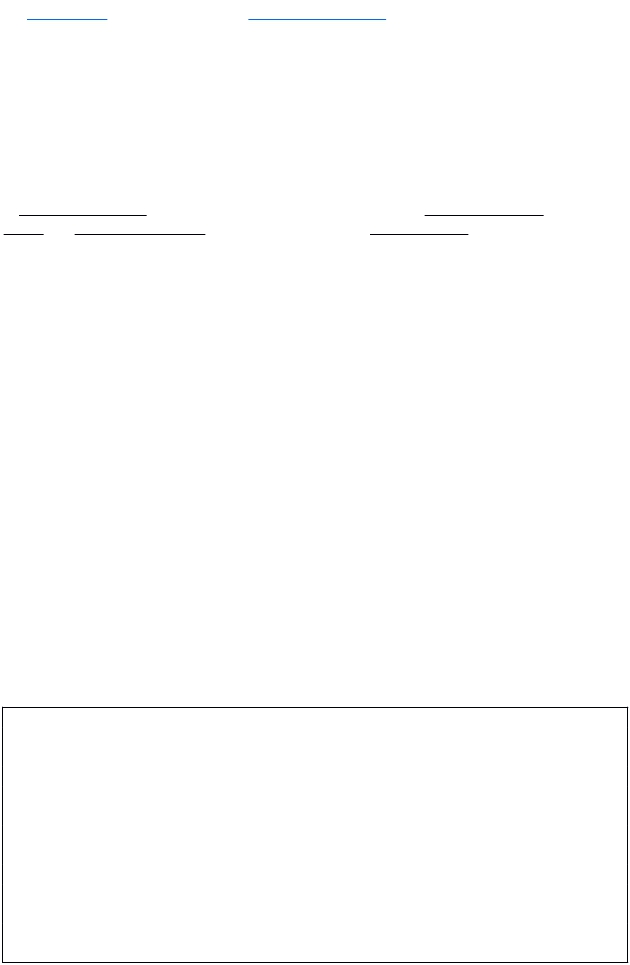

![]()
![]()
![]()
![]()
![]()
![]()
![]()
![]()
![]()
![]()
![]()
![]()
![]()
![]()
![]()
![]()
![]()
![]()
![]()
![]()
![]()
![]()
![]()
![]()
![]()
![]()
![]()
![]()
![]()
![]()
![]()
![]()
![]()
![]()
![]()
![]()
![]()
![]()
![]()
![]()
![]()
![]()
![]()
![]()
![]()
![]()
![]()
![]()
![]()
![]() Министерство науки и высшего образования Российской Федерации
Министерство науки и высшего образования Российской Федерации
Самарский колледж строительства и предпринимательства (филиал) федерального
государственного бюджетного образовательного учреждения высшего образования
«Национальный исследовательский
Московский государственный строительный университет»
Методическое пособие для практических занятий по иностранному языку
для студентов специальностей технологического (технического) профиля
для студентов очной формы обучения
2020
 Разработчики:
Разработчики:
Кузнецова Л.В. – преподаватель высшей квалификационной категории
Сергеева Т.Н. – преподаватель первой квалификационной категории
Contents
 Unit 1 Building and its Parts (Components)…………………………………….5
Unit 1 Building and its Parts (Components)…………………………………….5
Unit 2 Building Materials and Joints …………………………………………..10
Unit 3 College as an eduCational institution ………………………….............. 17
Unit 4 The Profession of a Builder……………………………………………...27
Unit 5 Building Professions and Trades………………………………………..36
Unit 6 The English Language…………………………………………………...43
Literature………………………………………………………………………...47
UNIT 1
Building and its Parts (Components)
(Здание и его части)
1. The word “building” indiCates a system of inner (internal) and outer (external)
Components. Here you Can see some parts of building. While reading, deCide for
eaCh part if it is external or internal, e.g.:
To be – быть, являться, находиться
…..is an external part of building.
……is an internal … .
Balcony ….
Gate ворота
Door дверь
 Pillar, Column колонна
Pillar, Column колонна
Roof крыша
Staircase лестница
Lift, elevator лифт….
Loggia ….
Refuse chute мусоропровод
Window окно
Raft основание (фундамента)
Partition, separation wall перегородка
Lap перекрытие
Basement подвал
Floor пол, этаж
Ground floor
First floor
Ceiling потолок
Wall o стена
Foundation фундамент
Erker эркер
Storey, floor этаж
Chimney труба, дымоход
There is… ( есть….) in my house/flat.
The house has…
ExerCises
2. Look at the piCture and say what parts this building has or has not.
From the outside this building (It) has …
Inside the building there is/are …
But this building has not …
3. Look at the piCtures and name parts of building:
3. Read the small text about a dwelling house. Find all the words, indiCating parts of
building. What other types of houses do you know?
 This is my dwelling house. It is neither(ни) big nor(ни) small. My house has two floors, but it
This is my dwelling house. It is neither(ни) big nor(ни) small. My house has two floors, but it
has not a balCony. It consists of building materials such as bricks, wooden constructions and
artificial materials. My house has three rooms, a nursery, a kitChen, a living room. The
rooms are cosy and large with high Ceilings. It has central heating, gas and it is very comfortable.
A lavatory, joints of drain have sanitary fittings. My house has central heating and the alarm
system.
My house is very nice and warm.
3. Speak to your group-mate and ask him about his dwelling house.
What does your house look like?
Is there a …. in your house?
Has your house a …?
How many … are there in your house?
3. Write a Composition about your dwelling house, desCribing its external and internal
parts.
Home Reading
3. Read an extraCt from the “Famous Five” by Enid Blyton.Give a good translation of
the text.
“There is a castle!” said Julian. Shall we explore that now? I do want to.
“Yes, we will,” said George. “Look – that is where the entrance used to be – through that big
broken archway.”
The children gazed at the enormous old archway, now half-broken down. Behind it were ruined
stone steps leading towards the center of the castle.
“It had strong walls all round it, with two towers”, said George. “One tower is almost gone, as
you can see, but the other is not so bad. <…>. This is the centre of the castle,” said George, as
they entered through a ruined doorway into what looked like a great yard, whose stone floor was
now overgrown with grass and other weeds. “Here is where the people used to live. You can see
where the rooms were – look, there’s one almost whole there. Go through that little door and
you’ll see it.”
They trooped through a doorway and found themselves in a dark, stone-walled, stone-roofed
room, with a space at one end where a fire-place must have been. Two slit-like windows lighted
the room. It felt very queer and mysterious.
<…> “Was there upstairs to the castle, George?”
“Of course”, said George. “But the steps that led up are gone.”<…>
“Were there any dungeons?” asked Dick.
“I don’t know”, said George. “I expect so. But nobody could find them now – everywhere is so
overgrown.”
TASKS
(I)
1. What type of building did the children explore?
2. Is it in good condition?
3. What parts of the castle remained? And what parts are gone?
4. Was there a staircase in the castle?
5. What room did the children enter? How did it look?
 6. What is “dungeons”? “Upstairs”?
6. What is “dungeons”? “Upstairs”?
(II)
1. Describe the mysterious room in the castle.
2. Describe the ruined castle.
3. Describe the castle before its destruction.
4. Retell the whole story and finish it.
Cultural Note
8. Look at the piCture and read the small text:
St. Basil’s cathedral is the pride of the Russian people: it has graced Red Square for more then
four centuries. It was designed by the great architects Barma and Postnik during 1555-1562.
Can you answer the following questions?
What type of building do you see? Is it a religious construction? How is it called? Where is it
situated?
How many domes (dome – купол) has it? Is it beautiful, magnificent? Can you say that it is a
masterpiece of Russian architecture? Who constructed it? When? What is this building famous
for?
9. Now speak about this type of ConstruCtion. Use the words:
Belfry – колокольня
Tier – ярус
Steeple – шпиль
Cross on the top – крест на верху
… is shaped like a pyramid – ….в форме пирамиды
 UNIT 2
UNIT 2
Building Materials and Joints
(Основные строительные материалы и крепления)
1. It is impossible to imagine ConstruCtion of a building without building materials. There
are natural and artifiCial building materials. Learn the words from the voCabulary and
Classify them (1) into materials and joints, and then Classify building materials
(2) into natural and artificial.
Joints are …. Materials are….
…… is an artificial building material.
…… is a natural ……. .
Fittings арматура
Concrete бетон
Bitumen битум
Bolt болт
Screw винт
Nail гвоздь
Gravel гравий
Board доска
Wood, timber древесина
Sheet material железо (кровельное)
Brick кирпич
Glue клей
Paint краска
Linoleum линолеум
Sand песок
Saw-timber пиломатериалы
Slab плита
Stone камень
Glass стекло
Glass wool стекловата
Ruberoid рубероид
Roofing felt толь
Pipe труба
Roofing slate шифер
Putty шпаклевка
Cement цемент
Tile черепица
ExerCises
2. DesCrbe building materials with the help of the following words :
Hard- ?, soft - ? , light - ?, heavy - ?
3. Look at the piCture on page 4, ex. 3 and say what these parts of building are made of,
e.g.:
The staircase is made of (сделан из)
….. …… are made of (сделаны из)
4. Say what building materials are used to make different parts of building or other
building materials e.g.:
Boards and sheet metal are used (используются) to make a roof.
Concrete is used (используется) to make a foundation.
 5. Imagine you want to put up:
5. Imagine you want to put up:
a) a hen house
b) a dog house
c) a country house
d) a castle.
What building materials do you need?
To make/create a … I need…(I use…) Для того, чтобы изготовить…мне
требуется… (Я использую…)
…..is / are necessary for … Необходим/ы для….
Besides I want … Кроме этого мне нужно …
I can’t do without … Не могу обойтись без …
6. You are in a “Building Materials” shop. You buy some roofing slates for the roof of your
house and some glass wool. Let one student be a shop-assistant and you are a Customer
(Client).
Can I help you? (What can I do for you?)
I want … (Please, I’d like …)
Oh…have you got …
I also need …
How much does it cost?
Shall I pay you or at the cash-desk?
Very good, do you want any …
What about …?
What else?
I can offer you a wide choice of ….
7. Continue the sentenCes with the right name of a Certain building material:
1. A building material made by mixing (при помощи смешивания) cement with sand, gravel is
…
2. Small stones with coarse sand used for roads and path are called(называются) …
3. Hard solid substance of a tree below the bark is …
4. A block of clay moulded (имеющий определенную форму) and baked by fire is …
5. Thick flat piece of stone, wood is a …
6. Grey powder which after being wetted (смешанная с водой), becomes hard like stone is …
Cultural Note
8. This is the famous Cathedral of Christ the Saviour. DesCribe what building materials
were used in the ConstruCtion of this magnifiCent ChurCh.
9. Read the artiCle from Internet about the Cathedral and say what you have learned from
it:
The Cathedral of Christ the Saviour (khram Khrista Spasitela) in Moscow may be the largest
Orthodox church in the world. The building is magnificent, but not as old as it looks: it was
rebuilt in 2000 after the original was demolished by Stalin.
History
The idea for this church dates from the early 19th century. When the last of Napoleon's soldiers
left Moscow, Tsar Alexander I signed a manifesto dated December 25, 1812, declaring his
intention to build a cathedral in honor of Christ the Savior. The cathedral would "signify Our
gratitude to Divine Providence for saving Russia from the doom that overshadowed Her" and
acts as a memorial to the sacrifices of the Russian people.







![]()
![]()

![]()
![]()
![]()
![]()
![]()
![]()
![]()
![]()
![]()

![]()
![]()
![]()







![]()
![]()

![]()
![]()
![]()
![]()
![]()
![]()
![]()
![]()
![]()

![]()
![]()
![]() Plans were drawn and a site was chosen but before construction began, Alexander I was
Plans were drawn and a site was chosen but before construction began, Alexander I was
succeeded by his brother Nicholas. Profoundly Orthodox and patriotic, the new Tsar disliked the
Neoclassical design that had been endorsed by his brother.
Alexander commissioned his favourite architect Konstantin Thon to create a new design,
modeled after the Hagia Sophia in Constantinople. The present site was chosen by the Tsar in
1837; a convent and church already standing on the site had to be relocated.
Construction began in 1839 and the cathedral didn't emerge from its scaffolding until 1860;
elaborate frescos by some of the best Russian painters continued in the interior for another 20
years. The cathedral was consecrated on the day Alexander III was crowned, May 26, 1883. A
year earlier, Tchaikovsky's "1812 Overture" debuted there.
After the Revolution, the prominent site of the cathedral called out for redevelopment by
the Soviets, who planned to replace the church with a monument to socialism, known as the
Palace of Soviets. It would rise in modernistic buttressed tiers to support a gigantic sculpture of
Lenin, arm raised in blessing, perched atop a dome. On December 5, 1931, the Cathedral of
Christ the Saviour was dynamited and reduced to rubble.
Funds for the largest building in the world remained unavailable, however. A foundation hole
gaped on the site until under Nikita Khrushchev it was transformed into a huge publiC
swimming pool.
With the end of the Soviet rule, the Russian Orthodox Church received permission to rebuild the
Cathedral of Christ the Saviour (February 1990). A temporary cornerstone was laid by the end of
the year.
A construction fund was opened in 1992 and foundations began to be poured in the fall of 1994.
The lower church (Church of the Transfiguration) was consecrated in 1996, and the completed
Cathedral of Christ the Saviour was consecrated August 19, 2000.
Home Reading
9. Read an extraCt about the invention of some building material. Give a good
translation of the text. Give answers to the following questions: 1) what was
invented? 2) Who was the inventor?
Wonderful Invention
We live in the world of reinforced concrete. Modern houses and skyscrapers are built of
reinforced concrete as are also tunnels and dams and bridges.
Who was the genius that created this wonderful material?
Reinforced concrete was first made in 1861 by the French gardener Monier. He needed tubs, but
he had no money to buy them. Monier decided to make the tub from clay like a flower pot.
There was no clay at hand but he found some cement. Monier began to shape his tub from
cement.
For this purpose he took two wooden tubs, one larger than the other, put one into the other and in
between poured cement.
When the cement hardened he broke up both wooden tubs and obtained a large cement tub
barrel.
The tubs were heavy and bulky, but the trouble was that they were weak.
The gardener had to place iron bars along the tub to make it stronger or in other words to
reinforce it and put another layer above the bars to make it look nice.
A strange thing happened. The barrel proved to be unusually strong. Hen Monier began to make
the walls thinner, and still the barrels remained very strong. This was how reinforced concrete
was born.
Tasks:
I


![]()
![]()

![]()
![]() Translate, using the
Translate, using the
text: изобретать, изобретение, бетон, небоскреб, бадья, с этой целью, помеха, слабый, нео
бычайно сильный, железные прутья, тонкий, тяжелый.
II
Найдите 2-ую форму следующих глаголов:
V1
V2
Translation
To invent
To be
To reinforce
To have
To create
To make
To need
To begin
To shape
To find
To pour
To obtain
To put
To break
To prove
III
Agree or disagree?
1. Monier was a genius who created the reinforced concrete.
2. Monier was an Italian inventor.
3. Monier invented reinforced concrete in the 19th century.
4. Monier made tubs from clay.
5. The first tub was weak.
6. The iron bars helped to make the tubs stronger.
IV
Give the answers to the following questions:
1. Who was the genius that created the reinforced concrete?
2. Why did Monier invent the reinforced concrete?
3. What building materials did Monier use to make tubs?
4. How did he make his first tub?
5. Were his first tubs strong or weak?
6. How did Monier reinforce them?
7. Was reinforces concrete a wonderful invention?
8. How is reinforced concrete used nowadays?
V
Translate the annotation to the text from Russian into English:
Железобетон был изобретен французским садоводом Монье в 19 веке. Монье был
беден(poor) и не мог (could not)купить бадьи для сада. Он решил сделать их из глины, но
глины также(also) не было. Тогда он взял цемент и залил его между двумя бочками,
 вставленными (put) одна в другую. Новая (the new) бадья оказалась слабой. Монье
вставленными (put) одна в другую. Новая (the new) бадья оказалась слабой. Монье
поместил железные прутья вдоль бадьи и положил еще один слой цемента. Бочка
оказалась очень прочной и был получен новый строительный материал – железобетон.
UNIT 3
College as an eduCational institution
(Колледж как образовательное учреждение)
1. You are a College student. College is a Certain type of eduCational institution. What
eduCation does College give?
What subjeCts do you learn at the College? What departments are there in your College?
Learn the words given below and answer these questions.
College – колледж
Student - студент
Study – учиться, изучать
Teacher – учитель, преподаватель
Educational institution – образовательное учреждение
First-, second-, third-year student – 1, 2, 3 курса студент
Full-, part-time student – очного, заочного отделения студент
Education – образование
Studies – учеба
Last – длиться, продолжаться
Secondary specialized education – среднее специальное образование
General, profound knowledge – общие, углубленные знания
Department – отделение
Veterinary- ветеринарное
Building- строительное
Economy and accounting- экономика и бухгалтерский учет
Get=receive – получать
Correspondence department- заочное отделение
Academic subjects – общеобразовательные предметы
 Special subjects – специальные предметы
Special subjects – специальные предметы
ExerCises
2. Say if you agree, translate and repeat in English:
1. I study at the college.
2. I am a second-year student. I study in the second year.
3. I am a full-time student.
4. I get (receive) secondary specialized education.
5. College gives secondary specialized education.
6. College gives general knowledge in academic subjects.
7. College gives profound knowledge in special subjects.
8. I study academic and special subjects at the college.
9. I get general knowledge in academic subjects.
10) I get profound knowledge in special subjects.
11) I receive a profession at the college.
12) I am glad to be a college student.
13) It is interesting to study at the college.
14) The education at college lasts from 3 till 5 years.
15) The studies at our college last from 3 to 5 years.
15) I study in the veterinary (building, economy and accounting) department.
3. Transform the sentenCes from the exerCise 1 where possible to begin with the
words He/She/My friend/This student….
4. CorreCt the sentenCes:
1. She am not a second-year student.
2. I am a first-year student of the Moscow Business college.
3. He a full-time second-year student.
4. I in the veterinary department
5. He study in the building department.
6. She get a secondary education at the college.
7. We studies academic and special subjects at the college.
8. The study last from 3 to 4 years at the college.
9. Full-time students study at the Correspondence department.
5. Translate from Russian into English:
1. Наш колледж – это среднее специальное общеобразовательное учреждение.
2. Я / Мой друг/ Мой друг и я/ учусь (-ится, -имся) в колледже.
3. Я /Мой друг/мы – студент (-ы) второго курса колледжа.
4. Я учусь на втором курсе строительного отделения.
5. Он студент - очник ветеринарного отделения, второго курса колледжа.
6. Мы учимся на строительном отделении.
7. Мы изучаем общеобразовательные и специальные дисциплины.
8. Он получает среднее специальное образование в колледже.
9. Она получает профессию в колледже.
10. Я получаю глубокие знания по специальным дисциплинам.
11. Обучение студентов строительного отделения продолжается 4-5 лет.
12. Много студентов учится на заочном отделении.
13. Она – студентка–заочница, третьего курса отделения «Экономика и бухучет».
14. Мы получаем общие сведения по общеобразовательным дисциплинам.
 6. Make questions of the sentenCes given above and ask them your group-mates.
6. Make questions of the sentenCes given above and ask them your group-mates.
===== ______ ? (для глаголов “to be” “to have”)
===== ______ =====? (для всех остальных глаголов)
Home Reading
7. Read the 2 texts about the Yuryevets AgriCultural College and say what is Common
and what is different in them.
TEXT (1)
I study at the Yuryevets Agriindustrial College. I study in the first (second, third) year. Our
college is a specialized secondary school. It is situated not far from the center of Yuryevets in
Titov Street.
Our college occupies two buildings. It runs a full-time and extra-mural eduCation. There are
four departments at our college: a veterinary department, a building department, an Economics
and Accounting department and a Tractor-driver’s department
Our college trains veterinary surgeons, builders, aCCountants and tractor-drivers. The
studies at our college last from two and a half to four years. There is a qualified staff of teachers
who help the students to aChieve knowledge in the line and working habits. There are many
studies, laboratories, workshops, a library, a canteen, a gym where we go in for sports. Many
students live in the hostel and rent a room. Students who work hard at the studies and do
not miss the lessons get grants. Graduates from our college work in different fields of building,
agriculture and economy all over the country.
TEXT (2)
The Yuryevets Agriindustrial College is situated in Titov Street. It oCCupies two buildings. One
of them is a three-storey building. The other is a four-storey building. Buildings
are ConneCted by a passage. On the first floor (ground floor) there is a big hall. On the right
there is a Cloak-room. On the left there is an advertisement board with a time-table and
a guard who keeps the keys of the Classrooms, studies, and laboratories (labs). Besides on the
ground floor you can find an assembly hall and a gymnasium. If you go straight and Cross the
passage you will find yourself in the second building. There is the teaCher’s room and a first
aid post. On the second floor there is a library and a Computer Class. In the basement there is
a Canteen and a workshop and a workout room.
VoCabulary
To be situated – располагаться canteen – столовая
To occupy – занимать workshop - мастерская
Building – здание workout room – тренажерный
Three-, four-storey – 3х-, 4х-этажный assembly hall – актовый зал
To be connected by – быть связанным gymnasium (gym) - спортзал
Passage – переход To go straight – идти прямо
Floor – этаж To cross – пересекать
Hall – вестибюль To find yourself – оказаться
Cloak-room – гардероб Teacher’s room – учительская
Advertisement board – доска объявлений First aid post – мед. пункт
Time-table – расписание Library – библиотека
Guard - охранник
Classroom – класс, аудитория
Study – кабинет
 Laboratory (lab) – лаборатория
Laboratory (lab) – лаборатория
8. Continue the sentenCe. (Продолжи незаконченную фразу.)
1) I am a …
2) I study …
3) The college is situated …
4) The college gives …
5) At college I get (receive) …
6) The students get (receive) …
7) College occupies …
8) The Yuryevets Agriindustrial College is…
9) The first (second) building is …
10) On the first (second) floor (basement) there is …
11) At the college there are many …
12) The college trains …
13) The students live in… or … a room.
9. Answer the questions. (Ответь на вопросы).
1. What are you?
2. Where do you study?
3. What year are you in?
4. Are you a full-time or a part-time student?
5. What education do you get at college?
6. What subjects do you study?
7. What knowledge do you get?
8. Can you receive a profession at the college?
9. What departments are there at the college?
10. What department are you in?
11. What kind of building is the college?
12. Where is the college situated?
13. What is there on the ground (first, second) floor? In the basement?
14. Where is the cloak room, the assembly hall, the teacher’s room, the library, the gym?
10. Read the texts about College one more time and do the following tasks.
1. Find in the texts about college the passages about: a) teachers, b) students. (Прочтите
текст «Наш колледж» и найдите абзац, в котором речь идет о: а) преподавателях, б)
студентах).
2. Prove from the text that: (Докажите из текста)
1. College has a good interior.
2. Students have an interesting life. Teachers help students.
3. Students have an interesting life.
4. Teachers help students.
3. Arrange the following sentences in the correct order.
(Расположите предложения по порядку).
1. Every year many students graduate from the college.
2. The Yuryevets Agricultural College has a good interior.
3. The college is situated in Titov Street.
 4. I am a student of the Yuryevets Agricultural College.
4. I am a student of the Yuryevets Agricultural College.
5. College has three departments.
4. Make a plan of the text. (Составьте план текста).
5. Give the sentence that is logically connected with the following sentences:
(Подберите к данным предложениям фразы, логически связанные с ними по смысл
у.)
1. I am a student. ……….. .
2. The college is situated in Titov Street. ………. .
3. The college gives secondary specialized education. …………. .
4. In college there are three departments. …………… .
5. The interior of the college is nice. ……………. .
6. The students work hard at college. …………… .
6. Paraphrase the given sentences. ( Перефразируйте эти предложения, сохраняя их
смысл).
9. Read the texts onCe more and Choose the statement you like and express your
viewpoint by some sentenCes: (Прочтите текст еще раз и скажите).
1. Why it is good to be a student.
2. Why it is difficult to be a student.
3. Why it is interesting to be a student.
I think…
First…
Second …..
For example ….
Even ….
8. Introduce yourself and say some sentences about:
a) yourself, b) your college, c) the interior of a college, d) students’ life. (Представьтесь и
скажите несколько фраз: а) о себе, б) о вашем колледже, в) об интерьере колледжа, г) о
студенческой жизни.
12. Creative tasks.
1.
1. Убедите своего колеблющегося знакомого, который оканчивает школу,
поступать в ЮСХК.
2. Расскажите зарубежному гостю о колледже, в котором вы учитесь.
1.
3. Подготовьте презентацию и проведите экскурсию по колледжу для
зарубежных гостей.
At the College: Conversations.
 13. Read some dialogues in English and guess who is speaking in eaCh one: a teaCher, a
13. Read some dialogues in English and guess who is speaking in eaCh one: a teaCher, a
student, a librarian, a student on duty? Translate the words – a student’s card, a
pass, a dictionary, a traffic jam, a workout room.
I
Do you study or work?
I do at the Yuryevets Agriindustrial College, building department.
What year are you in?
I am a second-year full-time student? And you?
I am a first-year student of Ivanovo Economics & Business College.
II
Good morning! Could you help me? I need some English-Russian dictionaries.
I’d be glad to. May I see your student’s card, please?
Of course, here you are.
That’s OK. How many dictionaries do you want?
We need 10 for our English lesson.
III
Sorry, I am late. May I come in, please?
Come in. But why are you late?
Oh, some problems with the transport, - a traffic jam.
Are you ready for the lesson?
Yes I am.
So, take your copy-book and show it to me.
IV
Excuse me, please. Is there a workout room at the college?
Yes, there is.
Where is it?
Go along the corridor and turn to the left.
V
Are you a student?
Yes, I am. I am a first-year student of the Economics and Accounting department.
Show me your pass, please.
Here is my student’s card and a pass.
That’s OK.
13. ACt out the dialogue in miCro-groups and then Change the roles.
13. Translate these questions from English into Russian and then ask them your group-
mate.
1.
1. Ты учишься?
2. Где ты обучаешься?
3. Где находится гардероб (варианты: учительская, мед. пункт, актовый зал,
кабинет 25) в колледже?
![]()
![]()
![]()
![]()
![]()
![]()
![]()
![]()
![]()
![]()
![]()
![]()

![]()

![]()

![]()

![]()
![]()
![]()
![]()
![]()
![]()
![]()
![]()
![]()

![]()
![]()
![]()
![]()
![]()
![]()
![]()
![]()
![]()
![]()
![]()
![]()
![]()

![]()

![]()

![]()

![]()
![]()
![]()
![]()
![]()
![]()
![]()
![]()
![]()

![]() 4. Есть ли в колледже спортзал? (компьютерный класс, библиотека, интернет,
4. Есть ли в колледже спортзал? (компьютерный класс, библиотека, интернет,
мастерская, общежитие).
5. На каком курсе (отделении) ты учишься?
6. Какие предметы ты изучаешь в колледже?
7. Сколько лет длится учеба?
8. Где учится (живет) твой друг?
9. Твой друг живет в общежитии?
10. Сколько отделений в колледже?
11. Какое образование ты получаешь в колледже?
12. Нравится ли тебе учиться в колледже?
Cultural Note
Read some information about some of the British Colleges and say what you have learned:
Welcome to the Newbury College website. At the College, we are committed to high quality
learning opportunities to meet the needs of individuals and employers in West Berkshire and the
surrounding areas.
The College has a great many facilities and resources to assist with the delivery of a variety of
training programmes and we have in the region of 1000 courses on offer. We also provide tailor
made programmes to suit individual business needs. If you are hoping to gain a qualification,
progress to higher education, improve existing skills for employment, find the right course to
meet your staff training needs, or simply learn a new leisure interest - we have a course to meet a
very wide range of interests and abilities, both at the College or a range of community venues.
Working in partnership with Reading University, you can also study at Newbury College for a
Certificate of Higher Education which counts towards a Degree qualification, and the University
also validates our Foundation Degree programmes.
We are proud to have achieved certification in the Training Quality Standard in 2007. Along
with IiP and the Matrix award, this award confirms the high standard and quality of training and
development that we offer to the business community.
If you would like someone to visit your business and discuss your workforce training needs,
please contact the Business Development Office on 01635 845 000.
I hope you find something of interest on our website, and look forward to seeing you at Newbury
College in the near future.
Dr Anne MurdoCh
PrinCipal & Chief ExeCutive
Construction Summer School Courses
Fun and interactive workshops designed to help people new to DIY but faced with the common
challenges of basic maintenance of their home. The course will provide ideal taster in
construction multi-skills covering plastering, brick work and painting and decorating skills and
techniques to help you save money on repairs and improvements!
Kensington and Chelsea College's Summer Construction programme will provide you with the
confidence to tackle a number of projects of your own around your house and garden. These
 courses will be delivered at our Transition centre based in north Acton. We also provide
courses will be delivered at our Transition centre based in north Acton. We also provide
employability workshops and advice and guidance on progression to Further Education.
UNIT 4
The Profession of a Builder
(Профессия строитель)
1. When you entered the College you beCame a student. Now you are a student and you
enter the profession of a builder. What do you know about your future profession?
Necessary необходимый
Useful полезный
Important важный
Well-paid хорошо оплачиваемый
Is in much demand пользуется большим спросом
Central heating центральное отопление
Running water водопровод
Electricity ….
Gas ….
can’t live (do) without… не могут жить (обойтись) без
 It’s impossible невозможно
It’s impossible невозможно
Need in dwelling нуждаться в жилье
Protect from защищать от
Housing conditions жилищные условия
Meet the demands of соответствовать требованиям …
Use new methods of construction использовать новые методы строительства
Apply modern building materials применять современные строительные материалы
Try to move into стараться переехать в
Have … in their houses иметь … в своем доме
Housing problem жилищная проблема
To supply people with обеспечивать людей
To solve решать
2. Translate the following phrases into English:
Профессия строитель, важная и полезная профессия, хорошо оплачиваемая профессия, я
приобретаю нужную и хорошо оплачиваемую профессию, необходимые современные
удобства, необходимые жилищные условия, необходимые новые методы строительства,
важная жилищная проблема, стараться переехать в квартиру, стараться переехать в свой
дом, обеспечивать людей квартирами, обеспечивать людей жильем, обеспечивать людей
домами, решать жилищную проблему, применять новые методы строительства, применять
новые строительные материалы, иметь необходимые современные удобства в квартире.
3. MatCh the groups of words with the following questions:
1. What kind of profession is the profession of a builder?
2. Why is it necessary?
3. What problem do builders solve in society?
4. Do many people want to live in new apartments with modern conveniences?
5. What are the modern conveniences?
6. In what cases do the results of builders’ work meet the demands of people?
4. Translate the separate sentenCes and a small text into English:
1. Профессия строитель очень важная. 2. Она необходима, так как (because) строители
решают важную проблему в обществе, - жилищную проблему. 3. Они снабжают людей
квартирами и домами. 4. Люди нуждаются в жилье, которое (that)защищает их от
неблагоприятных природных условий (unfavorable weather conditions). 5. Люди не могут
обходиться без жилья. 6. Мы не можем обойтись без современных удобств. 7.
Центральное отопление, водопровод, газ и электричество – современные жилищные
удобства. 8. Многие люди имеют современные удобства в своих квартирах. 9. У вас
хорошие жилищные условия? 10. У вас есть современные удобства в квартире, в
общежитии? 11. Строители используют новые методы строительства и применяют
современные строительные материалы. 12. Некоторые(some) люди стараются переехать в
квартиры, другие(others) – в частные(private) дома.
Home Reading
5. Read the text and divide it into passages. Pay attention to the italiCized words:
My Future Profession
 I study at the Yuryevets Agricultural College. I am a full-time, second year student. I study in the
I study at the Yuryevets Agricultural College. I am a full-time, second year student. I study in the
building department. I want to be a builder. I have chosen this profession because it is very
useful, important, noble and interesting in my opinion. That is why I try to do my best to
gain more knowledge in the line and working habits. The main task of a construction is to solve
housing problem, in another words, to supply people with comfortable apartments and modern
conveniences. Nowadays new apartments are very expensive and not many people
can afford moving to new flats with improved housing conditions. The raising of all kinds of
construction must meet the demands of people in apartments. To solve this problem it is
necessary not only to apply new methods of construction but to produce modern building
materials. The most commonly used building materials are divided into natural and artificial
building materials. The main artificial building materials are cement, concrete, plastics, brick.
The main natural building materials are stone, sand, lime, timber and clay.
Notes
in my opinion – по моему мнению
that is why – поэтому
to do one’s best – делать все от кого-л. зависящее
in the line – по специальности
working habits – трудовые навыки
apartment (flat) – квартира
modern conveniences – современные удобства
nowadays – в наши дни
expensive – дорогой ( по стоимости)
afford – позволить
improved housing conditions – улучшенные жилищные условия
raising – увеличение, рост
to solve – решать (зд.чтобы решить)
to produce – производить
the most commonly used – в большинстве случаев используется
TASKS
I. Make the plan of the text.
II. DisCuss the text:
1. Where do you study?
2. What year and departments are you in?
3. What do you want to be?
4. Why have you chosen this profession?
5. What is the main task of a construction?
6. What must meet the demand of people?
7. What is necessary to do to solve a housing problem?
8. Into what groups are building materials divided?
9. What are the main natural building materials?
10. What are the main artificial building materials?
III. Say:
a) why the profession of a builder is useful;
b) what improved modern conveniences are;
c) what building materials you know;
d) how to solve housing problems of people?
 6. Read the text one more time and say:
6. Read the text one more time and say:
a) what building professions are mentioned in it;
b) what the main tasks have a builder, an architect, a civil engineer, a sanitary engineer;
c) why the profession of a builder is honorable;
d) what you must know to become a qualified builder or an architect.
7. Прочитайте следующие утверждения и расскажите, что вас ожидает в вашем
профессиональном будущем (для этого поставьте глаголы в данных предложениях в
простое будущее время). Переведите полученные фразы.
1) I am a builder.
2) My profession is a builder (a bricklayer, a construction site chief, a foreman).
3) I work as a builder
4) I am able to read a technical drawing
5) My aim is to provide people with flats with modern conveniences
6) My friend is a sanitary engineer. He protects the quality of water by purifying it.
7) My friend is an architect. He needs some knowledge of sculpture, design, mechanical
engineering and so on and so forth.
8) I try to contribute the beauty of my native town in future.
8. Make the plan of the text and divide it into passages.
9. Retell the text and say what your future job and tasks will be like.
10. Prepare a monologue aCCording to one of the following themes:
1) Speak about yourself and the profession of a builder.
2) The advantages and disadvantages of a building profession.
3) Housing problem.
4) The education at the college and the future building profession.
Cultural Note
9. Read the artiCle and find out some information about the Holy Trinity St. Sergius
Lavra.
The Holy Trinity St. Sergius Lavra
History
The monastery was founded as Holy Trinity Monastery by Sergius of Radonezh when he, with
his brother Stephen, established a cell and a simple chapel to begin lives of ascetic seclusion in
the forest wilderness at the Makovets Hill north of Moscow, Russia. They dedicated the chapel
to the Holy Trinity. As people learned about him, many came to his isolated cell for guidance.
Among these people were other ascetics who built cells near by. In time the number grew to
twelve monks and the beginnings of a hermitage was established. In 1355, Sergius produced a
charter for the monastery that formed a model for organization of Holy Trinity and was used also
by his many disciples who were to found over 400 monastic communities. The charter formed
the plan for growth of the monastery that included adding arefectory, kitchen, and bakery.
With the growth and increased fame of Holy Trinity, the influence of Sergius increased as he
supported the princes of Moscow. A highlight of this support was Sergius' blessing of Grand
















![]() Prince Dmitri Donskoy and his forces as Dmitri left to meet and defeat the Tatars in the Battle of
Prince Dmitri Donskoy and his forces as Dmitri left to meet and defeat the Tatars in the Battle of
Kulikovo in 1380, a battle in which two of Sergius' monks, Peresvet and Oslyabya, accompanied
Dmitri into battle.
Sergius died in 1392 just before the Tatars returned and devastated the monastery later in the
year. Again in 1408 the monastery was attacked and burned during the campaign of the Tatar
Khan Edigei against Moscow. The Abbot Nikon found the relics of Sergius miraculously
preserved in the ruins of the monastery when he began rebuilding. Abbot Nikon built a wooden
church in which the relics of Sergius were placed.
After each attack Abbot Nikon led the rebuilding of the monastery. In 1422, the same year that
Sergius was declared the patron saint of the Moscovite Russian state, construction in the Suzdal-
Vladimir style of a stone cathedral began. The builders were a team of Serbian monks who had
taken refuge in Holy Trinity after the Battle of Kosovo in Serbia. The cathedral, which replaced
the Church of St. Sergius over which it was built, was dedicated to the Holy Trinity. The relics of
St. Sergius are kept in this cathedral. Andrei Rublev and Daniil Chyorny, the great iconographers
of the day, took part in decorating Holy Trinity Cathedral with frescos.
In time, the tradition arose for the Moscow royalty to be baptized in the cathedral as well as
holding thanksgiving services. With donations from the nobles, the monastery became very rich,
even to maintaining an army of 20,000. It owned about one hundred estates that were worked by
over 106,000 serfs. However, the right to own such property was taken from the monastery in
1764.
The Church of the Descent of the Holy Spirit (Dukhovsky) was commissioned by Ivan III in
1476. This church, built by artisans from Pskov, is one of the remaining examples in Russia of a
church with a belltower on top of it. The Church of St. Nikon, commissioned by Basil III, was
completed in 1548, a year after Nikon was canonized. At the western wall of the Nikon church a
chapel called Serapion's Tent was built over the tomb of St. Serapion, the archbishop of
Novgorod.
As the sixteenth century progressed a major cathedral, modeled after the Dormition Cathedral in
the Moscow Kremlin, was commissioned in 1559 by Ivan IV, commonly labeled “the Terrible."
Construction of the Uspensky (Dormition) Cathedral took twenty-six years. It was built to
commemorate the conquests of Kazan and Astrakhan. The interior, including the iconostasis,
was the work of a number of artists: notably Simon Ushakov whose masterpiece icon of the Last
Supper adorns the iconostatsis and the violet and blue frescos of the interior walls done by
Yaroslav masters in 1684.
The wooden walls around the monastery were replaced during the middle of the sixteenth
century by thick stone walls. The walls that stretched for 1.5 kilometers were dotted by twelve
towers. The strong walls were instrumental in the defense of the monastery during the siege by
Polish forces from 1608 to 1610. Again in 1618, Wladyslaw IV besieged Holy Trinity
unsuccessfully. Throughout the remainder of the century construction of more structures took
placed. These included a royal palace ordered by Peter I for his father, Tsar Alexei, that now
houses the Theological Academy. In 1686, a refectory/church dedicated to St. Sergius was added
that for a while was the largest hall in Russia. The Church of John the Baptist's Nativity was
added in the last decade of the seventeenth century. This church was commissioned by the
Stroganov family and was built over one of the gates to the monastery. Also the century
witnessed the building of monks' cells, a hospital in 1635, and a chapel over the St. Sergius Well
that was discovered in 1644 and from which the faithful draw holy water.
The monastery was favored by Elizabeth, and she commissioned the Church of the Virgin of
Smolensk and an 98 meter tall belltower, built between 1741 and 1769 by the architects Ivan
Michurin and Dmitri Ukhtomsky. This was then the tallest structure in Russia.



![]()
![]()
![]()
![]()
![]()
![]()
![]()
![]()
![]()
![]()
![]()
![]()
![]()
![]()
![]()
![]()
![]()
![]()
![]()
![]()



![]()
![]()
![]()
![]()
![]()
![]()
![]()
![]()
![]()
![]()
![]()
![]()
![]()
![]()
![]()
![]()
![]()
![]()
![]()
![]() In 1742, a seminary was founded at the monastery. In 1814, the seminary was replaced by the
In 1742, a seminary was founded at the monastery. In 1814, the seminary was replaced by the
Moscow Academy that was transferred from Moscow to the monastery. Additionally, the
monastery supported a number of sketes in Sergiyev Posad.
Following the assumption of power by the Bolsheviks in late 1917, the Lavra was closed in 1920
by the new Soviet government, with its buildings being assigned to various governmental
institutions. Not withstanding rescue efforts by Pavel Florensky and his followers, many of the
sacramental valuables of the Lavra were lost or transferred to other places during these years.
The monastery bells were destroyed in 1930, including the 65 ton Tsar-Bell.
In 1945, the Bolsheviks returned the Holy Trinity Lavra to the remnants of the Orthodox Church
that existed within Russia. The return was part of the legalization of the Church in recognition of
its efforts in defense of the country during the Nazi invasion of World War II (The Great
Patriotic War). The first liturgy at the monastery was conducted on April 16, 1946 in the
Dormition Cathedral. The monastery remained the seat for the Patriarch until the patriarchate
was allowed the use of Danilov Monastery in Moscow in 1983.
9. Give the summary of the artiCle.
10. Make up 5 questions aCCording to the Contents of the artiCle to ask your mates and
the teaCher.
 UNIT 5
UNIT 5
Building Professions and Trades
(Строительные профессии и ремесла)
1. There are many building trades and professions. In faCt, they are various and numerous.
EaCh of them is neCessary and useful. Read the names of the following building professions
and say what of them are:
I. a) dangerous; (опасный)
b) interesting;
c) difficult; (сложный)
d) laborious (трудоемкий)
II. a) you like very much
b) you don’t like very much
steel erector арматурщик
steeple-jack верхолаз
bulldozer driver бульдозерист
building surveyor геодезист
work safety engineer инженер по технике безопасности
crane driver крановщик
roofer кровельщик
house-painter маляр
foreman мастер
mechanic механик
assembler монтажник
construction site chief начальник строительства
paper hanger обойщик
parquet floor layer паркетчик
slater плиточник
carpenter плотник
work superintendent прораб
plumber сантехник
welder сварщик
fitter слесарь
glazier стекольщик
joiner столяр
plasterer штукатур
electrician электрик
civil engineer инженер-строитель
sanitary engineer инженер по санитарной технике
architect архитектор
2. Read the names of building professions from the beginning to the end and from the end
to beginning, read together with the group and on your own.
 3. IntroduCe yourself aCCording to the model:
3. IntroduCe yourself aCCording to the model:
How do you do! Let me introduce myself. My name is …
I am…
4. ACt out small dialogue in pairs:
- How do you do! Let me introduce myself. My name is …
I am a new construction-site chief.
- How do you do. Glad to see you. I am a foreman.
***
- Excuse me, are you a foreman?
- No, I am not.
- And what are you?
- I am a house-painter.
***
Where is the crane driver?
He is having a short break for a dinner.
***
- I’d like to know what you are busy with?
- We are constructing a building of a new school.
5. Substitute, where possible, some words in the above dialogues into other.
6. Read the dialogue between a foreman and a ConstruCtion-site Chief. What questions does
the ConstruCtion site Chief ask the foreman and why? What information does the
ConstruCtion site Chief learn from the foreman?
- How do you do! Let me introduce myself. My name is …
I am a new construction-site chief.
- How do you do. Glad to see you. I am a foreman.
- I’d like to know what you are busy with.
- We are constructing a building of a new school.
- How many floors are there in this building?
- It is a three-storey building. We have already finished it and now we are doing the interior
finish of the building.
- All right. What workmen are employed in the construction?
- There are some joiners, carpenters, plasterers, bricklayers, roofers.
- Thank you for the information.
- You are welcome. Will you enter the building with me?
- All right let’s go together and you will show me the building.
- Let’s.
7. Read the dialogue one more time and try to reproduCe the role of the foreman and of the
ConstruCtion site Chief Correspondingly.
-I-
 - How do you do! Let me introduce myself. My name is …
- How do you do! Let me introduce myself. My name is …
I am a new construction-site chief.
- Здравствуйте. Рад Вас видеть. Я – мастер.
- I’d like to know what you are busy with.
- Мы строим здание новой школы.
- How many floors are there in this building?
- Это трехэтажное здание. Мы его уже закончили , и сейчас мы выполняем отделку
интерьера здания.
- All right. What workmen are employed in the construction?
- Есть несколько столяров, плотников, штукатуров, каменщиков, кровельщиков.
- Thank you for the information.
- Пожалуйста. Пожалуйста, пройдемте со мной внутрь здания.
- All right let’s go together and you will show me the building.
- Давайте.
__________________________________________________________________
II -
- Здравствуйте. Разрешите представиться. Меня зовут … Я новый начальник
строительства.
- How do you do. Glad to see you. I am a foreman.
- Хотелось бы знать, чем вы заняты.
- We are constructing a building of a new school.
- Сколько этажей в здании?
- It is a three-storey building. We have already finished it and now we are doing the interior
finish of the building.
- Хорошо. Какие рабочие заняты в строительстве?
- There are some joiners, carpenters, plasterers, bricklayers, roofers.
- Спасибо за информацию.
- You are welcome. Will you enter the building with me?
- Ладно. Давайте зайдем вместе и вы покажете мне здание.
- Let’s.
__________________________________________________________________
- III -
- Здравствуйте. Разрешите представиться. Меня зовут … Я новый начальник
строительства.
- Здравствуйте. Рад Вас видеть. Я – мастер.
- Хотелось бы знать, чем вы заняты.
- Мы строим здание новой школы.
- Сколько этажей в здании?
- Это трехэтажное здание. Мы его уже закончили, и сейчас мы выполняем отделку
интерьера здания.
- Хорошо. Какие рабочие заняты в строительстве?
- Есть несколько столяров, плотников, штукатуров, каменщиков, кровельщиков.
- Спасибо за информацию.
- Пожалуйста. Пожалуйста, пройдемте со мной внутрь здания.
- Ладно. Давайте зайдем вместе и вы покажете мне здание.
- Давайте.
Home Reading
8. Read and translate the text about the famous British arChiteCt.
![]()
![]()
![]()
![]()




![]()
![]()
![]()
![]()
![]()
![]()
![]()
![]()
![]()
![]()
![]()
![]()
![]()
![]()
![]()
![]()




![]()
![]()
![]()
![]()
![]()
![]()
![]()
![]()
![]()
![]()
![]()
![]()
![]()
![]()
![]() Sir Christopher Wren (1632 - 1723)
Sir Christopher Wren (1632 - 1723)
Christopher Wren by Sir Godfrey Kneller.
Wren was an English scientist and mathematician and one of Britain's most distinguished
architects, best known for the design of many London churches, including St Paul's Cathedral.
Christopher Wren was born on 20 October 1632 in East Knoyle, Wiltshire, where his father was
rector. His father later moved to Windsor and Wren was educated at Westminster School and
then Oxford University. He showed an early talent for mathematics and enjoyed inventing
things, including an instrument for writing in the dark and a pneumatic machine. In 1657, Wren
was appointed professor of astronomy at Gresham College in London and four years later,
professor of astronomy at Oxford. In 1662, he was one of the founding members of the Royal
Society, along with other mathematicians, scientists and scholars, many of whom were his
friends.
Wren's interest in architecture developed from his study of physics and engineering. In 1664 and
1665, Wren was commissioned to design the Sheldonian Theatre in Oxford and a chapel for
Pembroke College, Cambridge and from then on, architecture was his main focus. In 1665, Wren
visited Paris, where he was strongly influenced by French and Italian baroque styles.
In 1666, the Great Fire of London destroyed much of the medieval city, providing a huge
opportunity for Wren. He produced ambitious plans for rebuilding the whole area but they were
rejected, partly because property owners insisted on keeping the sites of their destroyed
buildings. Wren did design 51 new city churches, as well as the new St Paul's Cathedral. In 1669,
he was appointed surveyor of the royal works which effectively gave him control of all
government building in the country. He was knighted in 1673.
In 1675, Wren was commissioned to design the Royal Observatory at Greenwich. In 1682, he
received another royal commission, to design a hospital in Chelsea for retired soldiers, and in
1696 a hospital for sailors in Greenwich. Other buildings include Trinity College Library in
Cambridge (1677 - 1692), and the facade of Hampton Court Palace (1689 - 1694). Wren often
worked with the same team of craftsmen, including master plasterer John Groves and wood
carver Grinling Gibbons
Wren died on 25 February 1723. His gravestone in St Paul's Cathedral features the Latin
inscription which translates as: 'If you seek his memorial, look about you.'
Cultural Note
St Paul's Cathedral
From Wikipedia, the free encyclopedia
This article is about the cathedral church of the diocese of London. For other cathedrals
consecrated to Saint Paul, see Cathedral of Saint Paul (disambiguation).
St Paul's Cathedral is an Anglicancathedral on Ludgate Hill, the highest point in the City of
London, England, and is the seat of the Bishop of London. The present building dates from
 the 17th century and was designed by Sir Christopher Wren. It is generally reckoned to be
the 17th century and was designed by Sir Christopher Wren. It is generally reckoned to be
London's fifth St Paul's Cathedral, all having been built on the same site since AD 604. The
cathedral is one of London's most famous and most recognisable sights. At 365 feet (111m) high,
it was the tallest building in London from 1710 to 1962, and its dome is also among the highest
in the world.
Important services held at St. Paul's include the funerals of Lord Nelson, the Duke of Wellington
and Sir Winston Churchill; Jubilee celebrations for Queen Victoria; peace services marking the
end of the First and Second World Wars; the launch of the Festival of Britain and the
thanksgiving services for both the Golden Jubilee and 80th Birthday of Her Majesty the Queen.
The Royal Family holds most of its important marriages, christenings and funerals
at Westminster Abbey, but St Paul's was used for the marriage of Charles, Prince of
Wales and Lady Diana Spencer. The religious service forQueen Victoria's Diamond Jubilee was
also celebrated there. St Paul's Cathedral is still a busy working church, with hourly prayer and
daily services.
UNIT 6
The English Language
(Английский язык)
1. The English language is one of the humanitarian subjeCts at the College alongside with
the Russian, MathematiCs, History, and InformatiCs and so on.
Why do people all over the world learn foreign languages? Perhaps because the world is getting
smaller, in a way: nations are more closely linked with each other than ever before, companies
operate world-wide, scientists of different nationalities co-operate, and tourists travel practically
everywhere. The ability to communicate with people from other countries is getting more and
more important. And learning foreign languages broadens your horizons, too!
a) Use the following words to desCribe the English language:
language
tongue
belong
foreign
international
mother tongue
national
official
second language
widespread
commerce
politics
means of communication
 legislation законодательство
legislation законодательство
legal proceedings судопроизводство
education
literary литературный
dialect
jargon
common language просторечие
b) Say why you learn English at the College.
I. Why study English?
Learning English is a must for a XXI century professional no matter what job to choose. One can
not do well without one of the common European languages. I learn English because I want to
read Kingsley Amis and James Joyce, Ernst Hemingway and Lewis Carroll in their native
language. Besides, I like to travel. Speaking English I shall have no troubles looking for a room
or a meal anywhere in the world. I like to talk and make friends with people from different
countries.
Last autumn I became a member of the Student Pen-Pal Club and now I have much fun writing
letters to my Swiss and American pen-friends. I hope, some day we shall meet each other and
have a good time. There are also international friendship camps both in Russia and abroad where
you can meet boys and girls from any country of the world. They rarely can speak Russian which
is much more difficult to learn than English.
In a word, I understand that I have to learn English hard and in a proper way
2. Answer the following questions:
1) What subjects do you learn at the college?
2) What is your favourite subject?
3) What do you know about the English language?
4) Is it important (necessary) to learn English nowadays? Why?
5) Why do people all over the world learn foreign languages?
6) What kind of language is Russian?
Home Reading
3. Now learn some interesting faCts about English. Do it in groups and then share the
information with the others.
Q1. How many people speak English worldwide?
English is one of the most widely used languages in the world. Recent estimates suggest that
over 337 million people speak English as their first language, with possibly some 350 million
speaking it as a second language. America has the largest number of English speakers - over 226
million speak the language as a mother tongue. English is an official language in India, alongside
Hindi, and some 3,000 English newspapers are published throughout the country. English is also
the favoured (предпочитаемый)language of the world’s major airlines and international
commerce. Over 80 percent of the world’s electronically stored information is in English and
two-thirds of the world’s scientists read in English. English is an official language, or has a
special status in over 75 of the world’s territories.
 Q2. In what Countries do people speak English?
Q2. In what Countries do people speak English?
There are English –speaking countries: Great Britain, the USA, Canada, Australia and New
Zealand. They also speak English in India ( the official language), Nigeria, Sweeden, Denmark If
the rest of the world isn’t talking English, they’re borrowing English words to add to their own
language: the Japanese go on a "pikunikku" (picnic), Italians program their computers with "il
software", Germans talk about "ein Image Problem" and "das Cashflow" and Czechs say "ahoy!"
for "hello" - a greeting traditionally used by English sailors, which is interesting as there’s no sea
in the Czech Republic!
Q3. Why are many English words pronounCed differently from the way they are spelt?
The problems with the English spelling system came about as the language developed over a
period of 1,000 years. Some complications arose when the Romans tried to write down Old
English using the 23 letter Latin alphabet. Old English contained nearly 40 vowels and
consonants. The influence of French after the Norman Conquest also made an impact on English
spelling. French scribes introduced "qu" where Old English had used "cw" e.g. queen, and "gh"
instead of "h" e.g. night, amongst other changes.
With the introduction of the printing press in 1476 a standard spelling system emerged. And the
pronunciation of vowels continued to change during the 15th century, but because of the advent
of the printing press, spelling never caught up. Thus modern spelling in many ways reflects
outmoded pronunciation of words dating back to the Middle Ages.
4. CheCk your knowledge and do a test:
1. The English language is …
a) the native language of most British people;
b) the international language of South Africa, AUSTRALIA AND New Zealand;
c) the mother tongue of American, Canadian and some Indian people.
2. English is the mother tongue of:
a) 337 million people;
b) 350 million people;
c) 3000 English people.
3. Great Britain, the USA, Australia, Canada and …. are English-speaking countries.
a) India;
b) Africa;
c) New Zealand.
4. The Japanese people borrowed from English the word:
a) software;
b) cash flow;
c) picnic;
5. One of the reasons why many English words are pronounced differently from the way they are
spelt is:
a) the influence of French;
b) the influence of Latin;
c) the changes in spelling system.
6. For you English is … language.
 a)the first;
a)the first;
b)the second;
c)the foreign.
7. At the college you study English in order to …
a) use it professionally;
b) broaden your horizons;
c) just for fun.
8. Cockney is …
a) the literary language of old English books;
b) the dialect of many London’s workers;
c) the jargon of English students.
9. The English language came from
a) Old English language;
b) Proto-Germanic language;
c) Proto-European language.
10. English is …. subject at the college where you study.
a) special
b) academic
c) humanitarian
Literature
1) Камминг Дж. Англйский язык для студентов архитектурных и строительных
специальностей: Учеб./Джеймс Камминг; - М.:ООО»Издательство Астрель», 2004.
2) Томахин Г.Д. По странам изучаемого языка: Англ.яз.: Справ. Материалы. – 2-е изд.,
испр. – М.: Просвещение, 1998.
3) Радовель В.А. Английский язык для поступающих в вузы: грамматика, устные темы,
диалоги: учебное пособие/В.А. Радовель. – Ростов н/Д: Феникс, 2008
4) Маслыко Е.А. Настольная книга преподавателя иностранного языка. – Издательство
«Вышэйшая школа», 1997
5) Gillie Cunningham, Sue Mohamed. Language to go. Pre-Intermediate: Student’s Book –
Pearson, Longman – 128.
6) «Wikihow» Форма доступа: http: //wwwwikihow.com/Main page
Скачано с www.znanio.ru
Материалы на данной страницы взяты из открытых источников либо размещены пользователем в соответствии с договором-офертой сайта. Вы можете сообщить о нарушении.